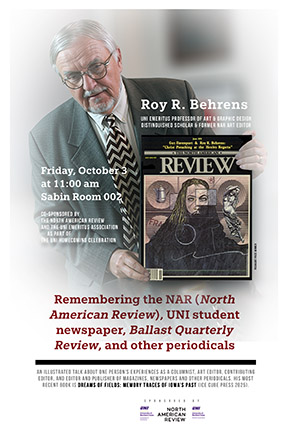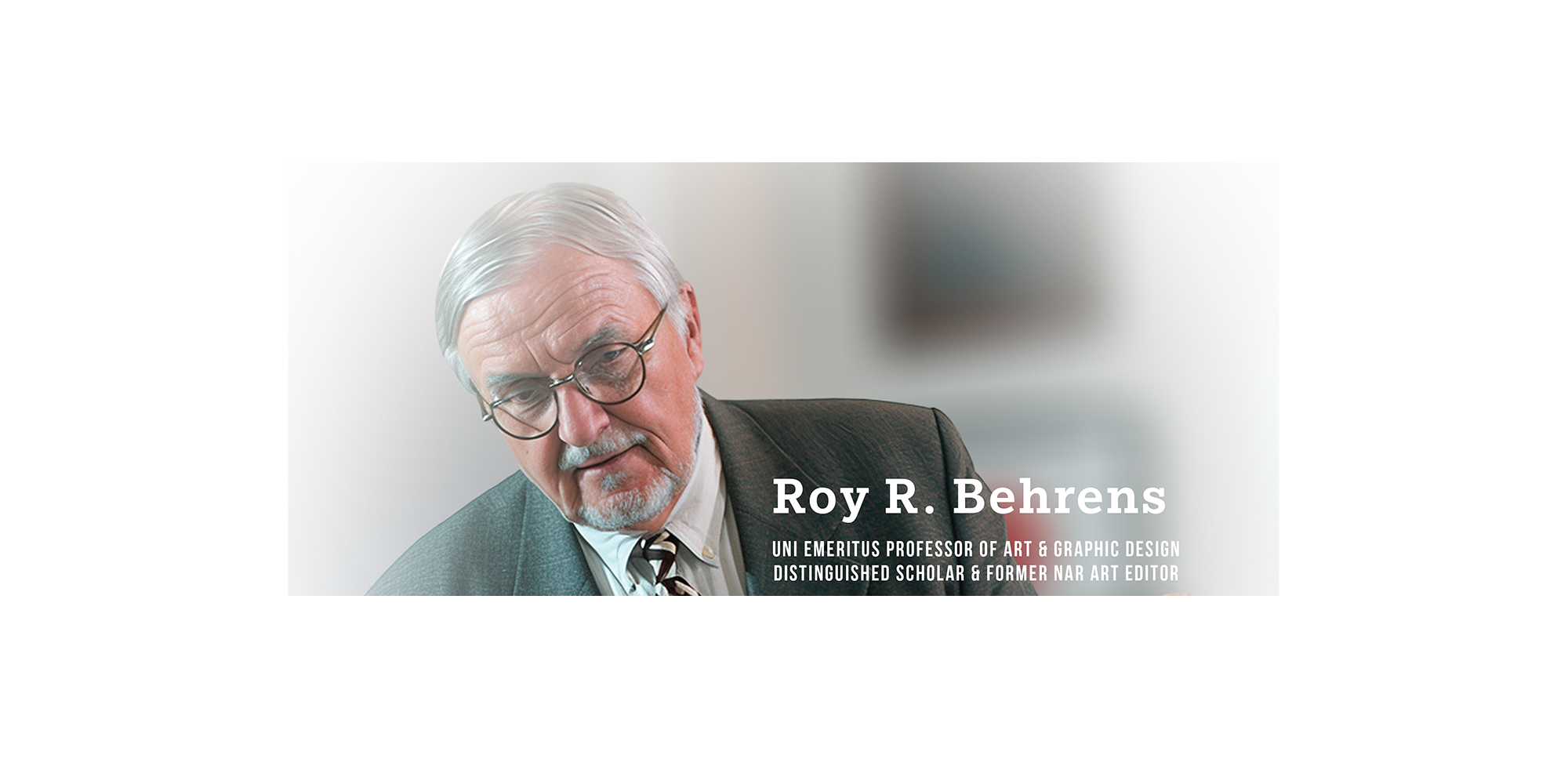An Interview with Roy Behrens
Friday, October 3 at 11:00 a.m. in Sabin 002
Roy R. Behrens is a UNI Emeritus Professor of Art & Graphic Design and a former art editor of the North American Review. He is also the author of the new essay collection, Dreams of Fields: Memory Traces of Iowa's Past. On Friday, October 3 at 11 a.m. in Sabin 002, he will be giving a presentation entitled "Remembering the NAR (North American Review) UNI student newspaper, Ballast Quarterly Review, and other periodicals." That event is sponsored by the UNI Department of Languages & Literatures, the UNI Department of Art & Graphic Design, the North American Review, and the UNI Emeritus Association.
Interview conducted by Sara Shannon.
SARA SHANNON: Your new book, Dreams of Fields, is a carefully curated collection of historical essays about either Iowans that have largely been forgotten or famous historical figures who had a connection to Iowa. You explore the lives and impact of historical Iowans who are largely unknown. How did you discover these particular Iowans, and why did you decide to write about them?
ROY BEHRENS: It actually happened through serendipity in almost every case. I was working on projects that had nothing to do with Iowa. I write about the involvement of artists and architects in the development of modern camouflage, not only military camouflage, especially during World War I, but also about zoological animal camouflage. That's what I've been writing about, primarily since 1969, and as I'm doing that, I unexpectedly run into these references to Iowa. I was always surprised to find little facts about people who were born in Iowa, which I didn't know before, and I was surprised and pleased at what they had done. When I came back to Iowa, I became more serious about investigating these concealed Iowans, and I traveled around Iowa giving talks about them. Those talks evolved into nonfiction essays.

SS: You’ve mentioned possessing a strong passion for nonfiction essays and historical events and figures, and you’ve taken part in social and political movements for change during your lifetime. How can reading nonfiction essays influence political change today?
RB: I'm particularly interested in memoirs, first person accounts of looking back on one's life and experience’s, maybe in other people's lives or at other times. And why would I do that? Why is that so interesting? It's because I want to know what I should do. I love looking back on people's autobiographical memoir accounts and asking, “How did they handle this situation, or when the country was threatened during their lifetime. What did they do? How did they survive, psychologically or physically?”
SS: As a graphic designer, artist, and magazine editor who has also published seven books and hundreds of articles, can you describe how your creative process differs between producing visual art and written literature?
RB: I don’t know that they differ much. I start out with bits. You know, some people, when they write, or maybe even when they make visual art, they start with an overall plan, almost like a layout of what they're going to do. I've watched people craft intricate outlines. I don't do that. I sit down, and maybe the first sentence starts to develop, and then maybe I revise that first sentence about 25 times in the process. I’m often uncertain what the essay will be about; I focus on catchy bits that get people’s attention and go from there. It's almost like a collage. I pick up little bits and pieces, making them into a whole work. That's what I'm doing in my artwork and in my writing. I'm collaging.
SS: You were a professor for 46 years and currently stay involved in university activities through the Emeritus Association and teaching at Drake University. How have your experiences as an educator shaped your perspective on writing about Iowan history?
RB: Well, one of the things that I'd like to convey to students, or to anyone, is to look for significance in their own surroundings. That's what I'm doing when I'm reading those memoirs or researching Iowa architecture or historic things. That's the content, or that's the impetus of my teaching that’s most impacted my writing. Look for the significance in your surroundings.

SS: In Dreams of Fields, you lightly discuss your experiences of Iowa and Midwest culture in your youth, detailing your desires to leave as soon as possible. Eventually, you decided to move back to Iowa. Today, many young people feel similar desires to escape the Heartland. Is there anything you’d like to say to Iowan youth?
RB: I would urge everyone to move around. And I don't mean necessarily starting in Iowa and moving to one place and resettling there. But I think I really benefited in my life by moving around quite a bit. Moving is often difficult and exhausting, but despite all that, it's just so refreshing to work with new people in a new situation. So go see the world, take advantage of study abroad, and don’t stay in the same place your whole life.

